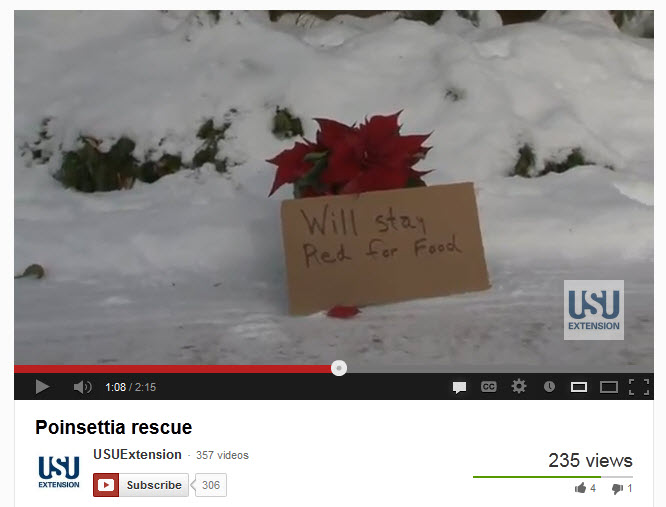This past week I gave a talk at our state wide nursery and landscape trade show. After my talk I stuck around and attended a couple of sessions, most of which were pretty good. One talk, however, set my teeth on edge. The presenter was a grounds manager for a local college that has embarked on a program of all-organic landscape care, including use of compost tea. Personally I don’t know much about compost tea aside from the fact that mention of the term causes Linda to go apoplectic. But I try to keep an open mind about such things so I grabbed a seat near the back of the room to see if I could glean a useful nugget or two. After 20 minutes I thought I was going to need to have someone physically restrain me from wrestling the speaking to the ground and pounding the remote from his hand like a smoking gun. He wasn’t a scientist and made no claims of such, nevertheless there is one fundamental concept of the English language that every presenter at a professional meeting like this must never, ever,ever, ever,ever,ever,ever,ever, forget. It is this: Words like better, larger, more, taller, healthier, and so on are comparatives. And any time we use a comparative it is followed by ‘than something’ otherwise it is meaningless. As I noted in one my earliest post on the blog, advertisers use comparatives without actually comparing them to anything all the time. “Scalp and Shoulders shampoo gives your hair more shine.” More shine than what? Not washing it at all? Rinsing with this morning’s leftover coffee? So every time this guy blathered on about how compost tea made the landscape healthier or the organic program made the lawn greener, I was like Alice in the Dilbert cartoon; “Must… control… fist… of… death…” I will freely admit to having biases against potions that sound like something concocted by the Macbeth’s witches, but as discussed in my post on PGR’s I can be persuaded by credible data. In this case there were none forthcoming. While many in the large crowd listened intently and took copious notes, the speaker waxed on about improved organic matter, reduced disease pressure, and improved growth and vigor. His evidence? He had a microscope slide of a drop of compost tea and which showed living bacteria. That was it. Hate to break it to you guy, but most 4th graders have looked at the same in a drop of pond water. During the question and answer session I finally spoke up. I admitted my biases and skepticism up front and asked straightforwardedly, “Do you have any evidence that the compost tea did anything?” The speaker, who was earnest and likable enough confessed, “No, not really.” I applaud his goal of trying reduce chemical inputs compared to past practices. I respect him for his willingness to give a 2 hour talk in front of 150 people. But without any data or clear point of comparison eventually you become a huckster trying to shill a product.
Category: Knock It Off
Won’t you help the poinsettias?
Those creative Utah Sate University Extension folks are at it again. Jerry Goodspeed’s hilarious Gnome Management video was a big hit among the gardening crowd a couple of years ago.
His current effort is a bit more…film noir.
"Mission accomplished" if you’ve been shamed into watering that poor poinsettia languishing in the dining room. A little fertilizer wouldn’t hurt, either.
An Interesting Video
Every once in a while someone sends us a news story or a video to look at critically. A couple of days ago Michael got in contact with us through Facebook and asked us to take a look at a video he saw recently and let him know what we thought of it. This video was posted on Russ Bianchi’s website (he goes by the name Uncle Russ). He includes a short note with the video which says “ALL Genetically Modified Organisms, Ingredients, Crops, Livestock, Food, Drugs, Cosmetics, Beverages, Packaging, Flavors, Fragrances, Colors! Soaps and Detergents are UNSFAE AT0ANY EXPSURE LEVEL and are proven to cause cancers, disease and premature DEATH”. Wow. All that from a video? Must be a heck of a video.
Here’s the video.
As far as I can tell, The party responsible for this video is Media Roots which is defined as “a citizen journalism project that reports the news from outside of party lines while providing a collaborative forum for conscious citizens, artists and activists to unite.” Too bad they didn’t include scientists who know something about genetically modified crops. According to Youtube this video has been viewed over 250,000 times.
I can’t tell you exactly what the other garden professors think of it (it may not be printable), but from my end, much of this video is absolute hogwash.
But, having said that much of this video is hogwash, I must give credit where credit is due. The first part of the film which explains how genes are moved from one organism to another was, in my opinion, pretty well done. Sure, there were parts of it that a serious molecular biologist would complain about, but for the average person I thought it was a nice explanation. In fact, after seeing this first part of the film I was expecting to see some really serious and thoughtful critiques of genetically modified organisms – because there absolutely are some good critiques of genetically modified organisms out there. Unfortunately I was sorely disappointed. Let me go through the major problems that this video raised one by one and explain why they’re faulty arguments (I won’t go through all the problems, just the major ones):
- Genetically Modified crops show lower yields – Yes, this is sometimes true, genetically modified crops aren’t genetically modified to produce more, just to resist certain pests that might reduce yields (or resist certain herbicides that help control pests). So the maximum yield for genetically modified and non-modified crops are usually pretty similar if the farmer growing the non-genetically modified crop controls pests with pesticides, or doesn’t see the pest for some reason.
- Genetically Modified crops have poisons in them – Yes, this is sometimes true. Genetically modified crops may have genes from Bacillus thuringiensis in them (In the video this name was misspelled and the species was capitalized – which is a big deal to a scientist). What the video didn’t mention is that this is an organic pesticide that has been used for years with, as far as we can tell, no adverse effects to humans. The report about people being hurt in the Philippines is a complete red herring. This supposedly occurred in 2003 and all of the data that we have points to a problem besides GMO corn pollen – in fact, the data points to a flu outbreak. This conclusion is strengthened by the fact that GMO corn pollen hasn’t been implicated in a similar incident since then.
- Genetically Modified Insulin is bad! – This one does have a grain of truth. GMO insulin is cheap and available, which is why it is used. In the vast majority of patients there appears to be no difference between it and naturally acquired insulin. But it does seem as though some people do have a negative reaction. It terms of deaths, I can’t find much that is trustworthy to corroborate what was said on the video.
I have been chastised previously for being pro-pesticide, pro-GMO, pro-Monsanto, etc. I don’t blame people for saying this because, let’s face it, I do end up defending these things sometimes because their opponents often use bad science. But saying that I’m for these things is going a little far. There is good science and information out there that calls into question the value of certain pesticides, GMOs, and even Monsanto. Look up the new genetically modified Kentucky bluegrass that may be coming out soon. Look up atrazine. Look up how Monsanto protects its patents. These are things I’m opposed to. Another thing I’m opposed to is saying that something is bad without having a good understanding of it. If you’re going to make a video that 250,000 people watch then do your homework and get as much of it right as you can.
Buried alive – the roots version
Bert’s post yesterday inspired me to share one of my own timelines that I followed for 7 years. As many of you know, I am a proponent of bare-rooting container and B&B shrubs and trees. One of the benefits is that you can prune away malformed roots, but another is that you can ensure the roots come into contact with the native soil as soon as possible. It’s interesting to see what happens over time with the more typical “pop and drop” method.
I saw this rhododendron being planted in 2002. If you look closely, you can see that it was originally balled and burlapped – the burlap is up around the multiple trunks. Then the burlapped bag was put inside a contained filled with media. You can see that, too. So a hole was dug that exactly mirrored the plastic container and the whole works was lifted out and plugged in.
Visualize a giant jawbreaker with different colored layers. At the center, we have the roots surrounded by clay. This is encased in burlap and twine. Then there’s a layer of container media. And finally we have the native soil. Rather than making it easy for this rhododendron to get established, we now have several barriers for new roots to overcome.
The primary problem here is all of the different textures of stuff in this planting hole: clay, soilless media, and native soil. Water doesn’t move easily through different soil types (remember Jeff’s demo on drainage?) and if water doesn’t move, neither will the roots. And as you follow this time line, it becomes quite apparent that the roots never established into the native soil. Look in particular at the size of the leaves (they are markedly smaller as time goes on – a great indicator of chronic drought stress). The line in the masonry wall makes it easy to see changes in height – or lack thereof.
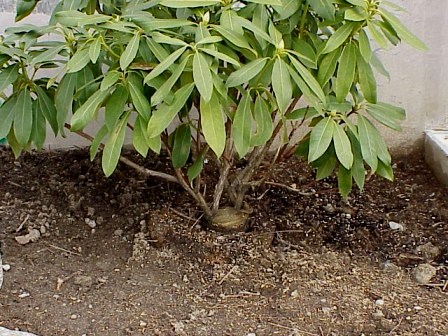
Installed in 2002 (year 0)

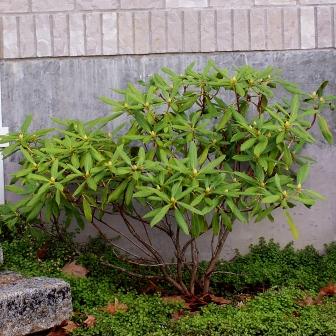
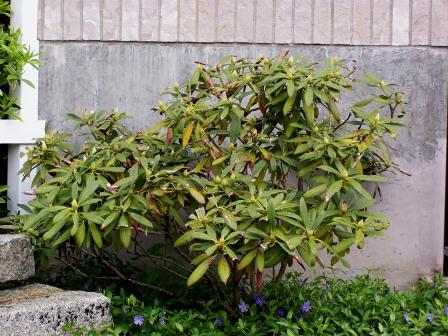
Early 2007 (Year 5)
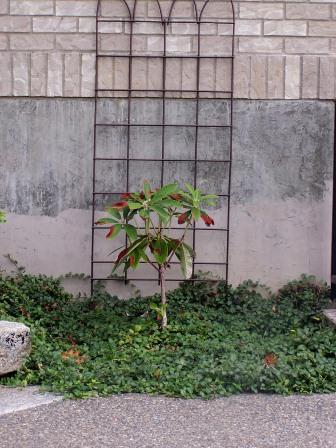
Why oh why? (Buried alive version)
Sometimes when I’m stumped for ideas for blog posts, I get in my car and drive around my neighborhood. Usually within 10 or 15 minutes I’ll see something stupid enough to write about. Today was no exception. We live in a mostly rural area north of East Lansing but development is slowly but surely encroaching around us. Part of that development includes a couple of golf courses. One of the golf courses recently announced they were going to develop a high-end RV park adjacent to their course. If you’re like me, ‘high-end’ and ‘RV park’ don’t sound like they belong together in the same sentence but I’ll take their word for it. In any event, when the project was announced the developers placated local residents by noting they would install a large berm around the RV park to screen it off from two highly traveled roads next to the park. Said berm was installed about a month ago.
Anyone see anything wrong with this picture? There are about a dozen trees in similar straights. Doesn’t give me much faith in the rest of this project…
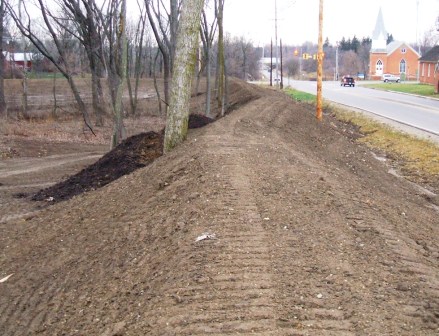
I think the one on the right will be OK (it’s a telephone pole). The one on the left, not so much…
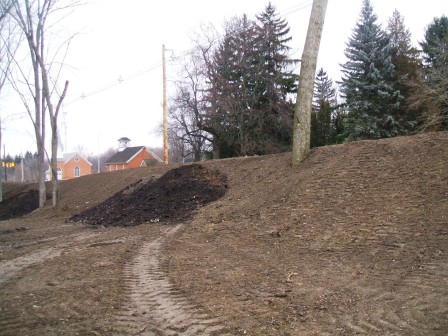
“Quit yer bitchin’. Ya wanted a berm, we built ya a dawgone berm!”
Important, must-read announcement regarding pesticide use
There’s a new report out from the Weed Science Society of America (WSSA) which blasts a common piece of gardening advice: use least toxic pesticides only as a last resort. Popular as it may be, this advice is not scientifically grounded and can actually cause more harm than good. The WSSA is joined in this announcement by the American Phytopathological Society (APS) and the Plant-Insect Ecosystems Section of the Entomological Society of
America (P-IE ESA).
This is a must-read for anyone who is a responsible educator regarding pesticide use, which includes Master Gardeners and other horticulture paraprofessionals. You’ll want to use the webpage link above to read the entire announcement, but here’s a paragraph to get you thinking:
“There is no benefit or scientific basis to simplistic messages like “use least toxic pesticides as a last resort” for the large number of pesticide users who apply pesticides according to the label and practice good stewardship. Nor are these messages beneficial for those who neither seek training nor adequately read the label believing instead that it is safe, practical, and effective to simply choose a product considered a “least toxic pesticide” and apply it only as a “last resort.” These messages hinder pesticide safety and stewardship education and practices that are in the best interest of the pesticide user, our food supply, public health and ecosystem preservation.”
Up in smoke
If you read my postings the last few weeks, you know that I’m doing a webinar on Wednesday on searching academic databases for information of interest and use to gardeners. While researching one of the suggested topics (should we mow leaves into the lawn or bag and dump them?) I found a 2012 article* entitled “Biomass yield from an urban landscape” in the journal Biomass and Bioenergy. My blood ran cold when I read this part of the abstract:
“It was estimated that the City of Woodward could generate about 3750 Mg of biomass dry matter in a normal rainfall year and about 6100 Mg in a high rainfall year if every homeowner collected their lawn thatch and clippings, and tree leaves, twigs, and limbs for bioenergy production.”
My first thought was that is a botanical version of The Matrix. My second thought was how misguided such a proposal would be. Rather than using the organic material in our landscapes and gardens to replenish soil nutrients naturally, or greencycle it, we’d gather every shred and give it away to be burnt for energy production. Then we’d spend money on fertilizers (organic or otherwise, it doesn’t matter), many if not all of which require energy to manufacture, package, and/or distribute.
Does anyone else see something wrong with this picture?
I can tell you who wins with this approach, and it sure isn’t us or our gardens.
(*Springer, T.L. 2012. Biomass yield from an urban landscape. Biomass and Bioenergy 37: 82-87.)
A followup on the WOW post of last week
There was considerable interest in my post last week, where I shared a photo from Canadian garden writer David Hobson. I wasn’t impressed with the production method and materials for the petunia that was illustrated, but readers wanted to know a little more about the plant (how did the top of it look?) and the mesh encasing the root ball. So I contacted David, and he graciously shared some more information and photos with me.
Here are David’s comments:
“Attached are three photos. Not the best, but the one beside the broom is the original that I sent you. It’s been lying on the patio and has lost a few stems. I don’t have a shot of it in flower as I didn’t particularly like it — one of those new wine and yellow striped things. It was in a container with a couple of other plants and did flower somewhat, but not noticeably well.

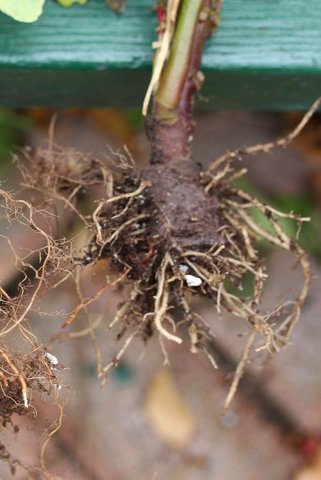

“As an after note, I removed the fabric from the petunia and dried it. It is a very fine mesh. I then subjected it to a heat source whereupon and it shriveled and melted as one would expect a plastic material to perform — draw your own conclusions.”
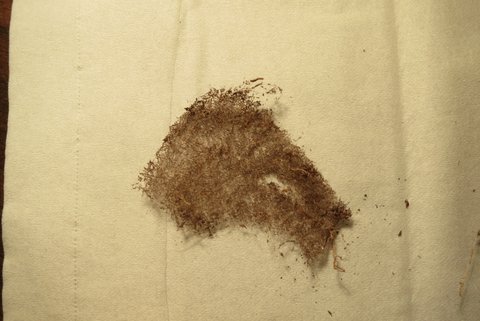
Another WOW (why oh why) – “biodegradable” mesh for plugs
David Hobson, a garden columnist, sent me this great photo of his petunia planted earlier this year. Take a look at the root growth (or lack thereof):

It sure doesn’t look like roots “easily penetrate” this fabric, at least when gardeners get them potted up at home. And though I can’t see the top of the plant, I’m guessing it didn’t show “improved transplanting performance,” especially compared to a plug from a traditional liner pot.
Nowhere did I find what this “non-woven fabric” was made of (though there are allusions online to it being biodegradable), but it’s just one more impediment for plants – and gardeners – to deal with.
Plant sentience – a slippery slope
I maintain a “Garden Professors blog” group on Facebook, where people can pose questions and make suggestions. Ellyn Shea asked about the trend towards calling plants sentient, especially given the new book by Daniel Chamovitz – What a Plant Knows: A Field Guide to the Senses
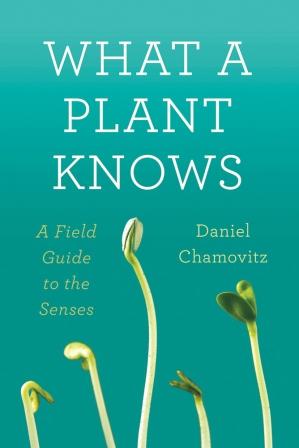
Dr. Chamovitz is a respected scientist, and there is no doubt that plants sense and respond to their environment in ways we are still learning to understand. But couching plant responses in language associated with human sentience is a slippery slope. Yes, it makes plant physiology more understandable to nonscientists, but it also leads to increased belief in pseudoscientific ideas. For example, here’s a response to an on-air interview with the author (the link is my own insertion):
“Over a hundred years ago Rudolf Steiner wrote about biodynamics and plant growth. Their sensitivities to the seasons, their environments, and humans…”
Here’s another:
“I have been talking to plants for years…our experimental garden overflows, the cellular intelligence, the capacity to communicate is deeply satisfying when you learn how to listen and feel what the plant is saying…they give us much information at a spiritual level as well as physical, i thank my flowers verbally, i sing to them,they respond in healing ways…water has the same living intelligence…talk to a glass of water with love before you drink it and it actually improves the feelings of health and flavor ….”
And another:
“One who understands this far more thoroughly than Chamovitch is Stephen Harrod Buhner, author of The Lost Language of Plants and the Secret Teachings of Plants, in which he details the most cutting edge cardio-neurological science which demonstrates that the heart (more neurons than muscle cells) is the body’s primary resonator and capable of direct energetic communication with the rest of the living community. All indigenous and ancient peoples knew this.”
Plant physiology is drastically different from animal physiology, and what we’ve learned about how plants work comes from centuries of careful scientific study – not from folklore and superstition. For those of us Garden Professor types who spend time educating the public about plant sciences, anthropomorphizing plants or using imprecise language just makes our jobs more difficult.
